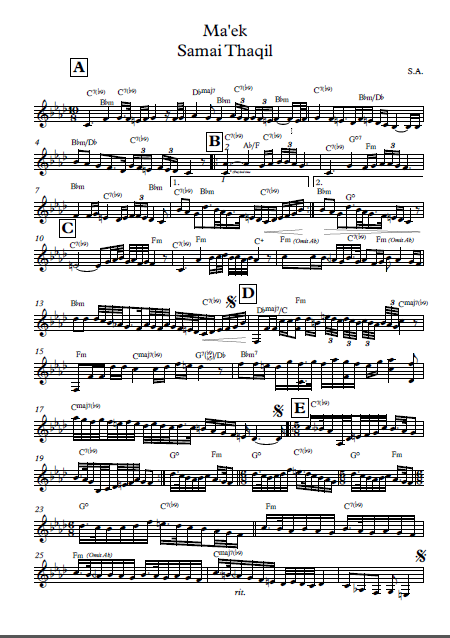As a composer, I have been confronted with the challenge of having a breadth of musical ideas that sometimes can become a hindrance during the composing process.
In this part of the thesis, I decided to limit myself by composing within some constraints to make more discipline. Thereby, imposing limitations can help to cut down on the many musical choices and eliminate the risk of paralysis. The compositional form becomes the framework that guides me to develop my ideas within a certain structure. Therefore, I chose the Sama’i.
The Sama'i is a Turkish/Ottoman instrumental composition form that is the most prominent in Arabic classical music. All parts are composed in the "Samai' Taaqil rhythm" (see below picture), except the fourth khana, which typically consists of a brief odd rhythmic cycle.
The structure of a Sama‘i is:
Khana 1 (A)– Taslim (B)– Khana 2 (C) – Taslim (B) – Khana 3 (D) – Taslim (B) – Khana 4 (E)– Taslim (B)
In this composition approach, I attempted to break away from the modal approach of performance, which is mostly unison, to an approach that seeks to create harmonic and rhythmic freedom. Whereas this is not the case when approaching the Sama'i traditionally. Also, the Iqa’ parts are frequently played in a static way with little variation, as I played it in the demo for “Ma’ek” (See below). However, I attempted to arrange it in such a way that it gives the musicians a sense of freedom while creating a rhythmical feel that is not static.




